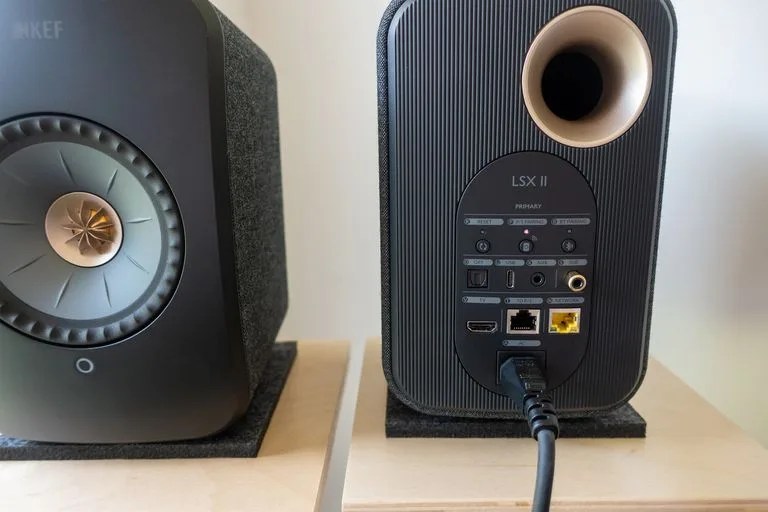Are Today’s Wireless Speakers Actually Too Good?
We’re beginning to wonder if the “do it all” trend is improving your life — or simply draining your wallet.
 Tucker Bowe
Tucker BoweIt’s trendy for speakers to “do it all.” Not only do many of today’s top choices support wired and wireless connections, they offer a lot of each. They have analog connections that allow you to hook them up to a turntable or TV. They boast Wi-Fi and Bluetooth streaming. In other words, you can use these speakers however you choose. And that’s a good thing … or at least it should be.
Take Sonos, for example. After years of making speakers that only supported Wi-Fi streaming — the Five (and previous Play:5) being the exception as it also has a line-in connection — Sonos has made a big push to make its newer speakers more versatile. All three 2023-released speakers (Era 100, Era 300 and Move 2) support Wi-Fi and Bluetooth streaming, plus have line-in connections so you can hardwire them to a turntable or computer.
Active speakers are more versatile than ever, too. They’ve always had a wealth of wired and wireless connections, but in recent years many manufacturers are adding HDMI-ARC or HDMI-eARC connections. This way you can connect active speakers directly to your TV and they work just like a modern plug-and-play soundbar. There’s no separate component (like an AV receiver) required. KEF’s LSX II is a prime example.

On the surface, this is great. It means your speakers are more dynamic and can evolve with you. But it also comes at a price. Literally.
Sonos has never been known for making cheap speakers (in fact, Sonos raised the prices of most of its speakers back in 2021), but the addition of Bluetooth and line-in has made its newest speakers considerably pricier. The Era 100 is $30 more expensive than the One (its predecessor), while the Move 2 is $50 more expensive than the original Move.
KEF also increased the prices of its next-gen active speakers. When the original LSX speakers were released in 2018, they were priced at $1,100. The 2022-released LSX IIs look nearly identical to their predecessors but cost an extra $300. Sure, KEF did a lot of things under-the-hood to make them sound even better, but you could argue the biggest improvement with the LSX II was its new wired connections. They have an HDMI-ARC port, so you can hook them up to a TV, and they have a USB-C port, so you can connect them directly to a computer.

You get what you pay for, but my biggest frustration with the added “versatility” of today’s modern speakers is that, well, most people will never take advantage of it. Most of us get speakers for a singular purpose. We get computer speakers for our computers. We get bookshelf speakers for receiver and hi-fi systems. We get a portable speaker to be portable. We get a smart speaker to be a smart speaker. We know what we’re buying a speaker for, typically a singular purpose, and we’re not going to veer the course.
The integration of Bluetooth in today’s wireless home speakers is probably the most perplexing to me. I get it if the speakers are portable, like Sonos’s Move 2 and Roam, as it makes the speakers considerably more useful. You can use them as portable Bluetooth speakers or home smart speakers that you can also carry from room to room. It makes sense.
However, it’s a different story with home speakers that stay stationary — there are very few cases where you’d ever use Bluetooth instead of Wi-Fi on a home speaker like Sonos’s Era 100 or Era 300, or even KEF’s LSX II. When in Bluetooth mode, the speakers don’t support a voice assistant. It doesn’t allow them to play as high-resolution audio. And it means the speaker has to always be wireless connected to your smartphone (or other device); when you leave the house or go out of range, the music stops.

If I’m thinking outside the box, it could make sense in some niche scenarios. A Bluetooth connection allows you to play music that isn’t on a music streaming service, such as music you’ve recorded or music from a YouTube video. If you’re having a party and you don’t want to share your Wi-Fi information with your guests, they can more easily take over control of your music. You could use it to connect a Bluetooth turntable to your wireless speaker, too. But how realistic or common are those situations, really? Like, who is doing those things?
Maybe it’s the geezer in me, but I find beauty in simplicity. I like a speaker that knows exactly what it is and doesn’t add unnecessary complications. I like portable Bluetooth speakers that don’t have a bunch of extra features and don’t force you to download an app for set-up. I like passive speakers for a similar reason — they’re plug and play.
Today’s wireless speakers are amazing, don’t get me wrong. They sound better, look better (arguably) and are way more versatile. But they’re also more expensive. And since I’m guessing most people won’t take full advantage (or any of it) of this extra versatility, it ultimately means you’re paying extra for something you probably don’t need.


